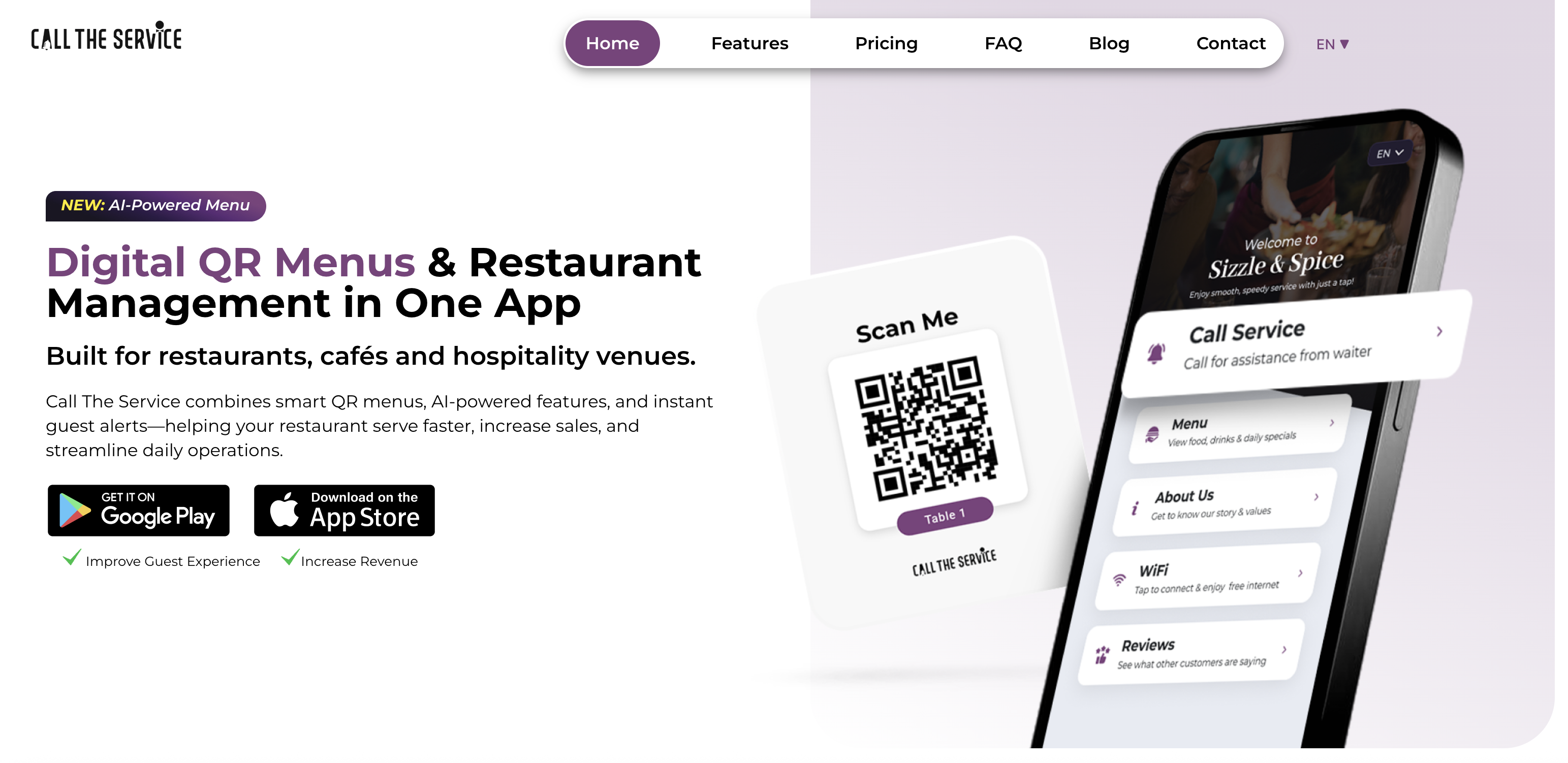In today’s global dining market, offering a multilingual menu is no longer optional; it’s a necessity. $1.5 trillion: the total number of restaurant sales expected by the end of 2025.

By removing language barriers and creating accessible, personalized dining experiences, restaurants can increase sales, reduce mistakes, and build stronger customer loyalty.
Here are the top 7 benefits of using a multilingual menu in your restaurant.
1. How a Multilingual Menu Improves Customer Experience
A multilingual menu helps diners feel comfortable and understood, regardless of their native tongue. Studies show that multilingual solutions can reduce order mistakes by 17% and shorten wait times significantly.
Restaurants in diverse communities or tourist-heavy areas often notice happier customers once they introduce translated menus with clear descriptions, images, and even braille-enabled QR codes. Real-time updates ensure customers always see accurate pricing and seasonal specials in their preferred menu language.
2. Easier Access for All Customers
Breaking down communication barriers is one of the biggest advantages of a multilingual menu. Beyond translations, these menus can include high-quality visuals, interactive elements, and braille-compatible QR codes.
Paired with cloud-based POS systems, restaurants can manage updates across multiple languages instantly. For example, Wicked Bao in Florida boosted international guest satisfaction by introducing smart digital menus that automatically adjust to the customer’s preferred menu language.
3. Strengthening Brand Image with Multilingual Menus
Using a multilingual menu showcases inclusivity and professionalism, enhancing your restaurant’s brand. This move not only attracts diverse diners but also positions your establishment as forward-thinking.
McDonald’s “Experience of the Future” initiative proved this worldwide, offering multilingual kiosks that reinforce a globally welcoming brand. Positive reviews, word-of-mouth recommendations, and tourist traffic all grow when a restaurant embraces menu language diversity.
4. Simplified Menu Updates
Managing multiple printed menus is costly and time-consuming. Digital systems with a multilingual menu eliminate this hassle by allowing real-time changes across all language versions.
For instance, Shinya Ramen uses multilingual smart menus to update daily specials instantly, saving on translation and printing costs. Staff spend less time on manual updates, while diners always enjoy accurate information in their preferred menu language.
5. Reducing Order Errors
Language barriers are one of the top causes of order mistakes. A multilingual menu cuts down errors by up to 17%, saving restaurants time and resources spent fixing miscommunications.
Wicked Bao’s digital menu integration allows customers to place orders directly in their language, boosting accuracy and customer confidence. Fewer mistakes mean smoother service and happier diners.
6. Boosting Sales with Multilingual Menus
A multilingual menu doesn’t just prevent errors—it actively drives sales. By showcasing promotions, high-margin items, or seasonal dishes across all language versions, restaurants can upsell more effectively.
Research confirms that diners are more likely to order—and spend more—when they fully understand the options available. McDonald’s multilingual kiosks are a perfect example, leading to higher average check sizes worldwide.
7. Gaining a Competitive Edge
In today’s competitive restaurant industry, a multilingual menu sets your business apart. Digital menus also deliver powerful insights, such as which languages are most used and which dishes perform best across cultural groups.
Shinya Ramen leveraged this data to refine offerings and attract more international guests. These insights, paired with sustainability benefits of paperless menus, give restaurants a lasting edge in a crowded market.
Also Read- 10 Best Menu Boards for Restaurants
Call The Service: Powering Multilingual Menus for Modern Restaurants

One of the most powerful features of Call The Service (CTS) is its ability to deliver a seamless multilingual menu experience. By translating menus into more than 100 languages instantly, CTS ensures that international guests can browse, order, and enjoy their meals without barriers.
With real-time synchronization across devices, diners always see accurate ingredient details, allergen information, promotions, and pricing in their preferred menu language. This makes the dining process more inclusive, efficient, and guest-friendly—while saving restaurants time and reducing costly errors.
Key Features
- 🌍 Digital Guest Page & Customization: Unlimited branded digital menus with real-time updates, ingredient details, allergen info, and promotions—accessible via QR code.
- 🪑 Table & Staff Management with Guest Call: Organize floor plans, assign staff, and route service calls instantly through QR-based requests for faster response times.
- 🤖 AI-Generated Images: Professional, consistent dish images without the high cost of food photography or styling.
- 🌐 Multilingual Menu: Automatically translate menus into 100+ languages, helping you serve international guests without communication issues.
- ⭐ Guest Rating Function: Collect real-time feedback after service calls to boost trust and improve guest satisfaction.
- 📊 Efficiency Monitoring Dashboard: Track call volume, response times, peak hours, and staff performance through actionable data.
- 🛎 Waiter Call & Order Requests: Guests can call staff, place orders, or request the bill directly from their table.
By combining multilingual menu functionality with these advanced tools, CTS enables restaurants to create an inclusive dining experience, optimize staff performance, and gain a clear competitive edge in today’s global hospitality industry.
Conclusion: Why Restaurants Need a Multilingual Menu
The benefits of adopting a multilingual menu go far beyond simple translation. From reducing mistakes and simplifying updates to boosting sales and enhancing brand image, the impact is clear. Restaurants that embrace multilingual solutions can improve customer retention, streamline operations, and achieve a strong return on investment.
In a world where inclusivity and accessibility matter more than ever, offering a menu language solution ensures your restaurant stays competitive while creating a welcoming experience for every guest.



